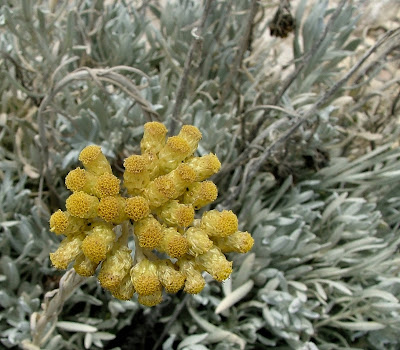As can be seen in the above photograph, the colour of the flower is a bright yellow bordering on orange. This is generally common for most individuals; such a noticeable array of petals contributes to frequent pollination and therefore the yellow flowers are selected for, passing on their genes. Despite this, as in all other organisms, genetic variations that contribute to a different flower appearance do pop up from time to time. The most common of these variations is a dichroic scheme to the petals, with a discoloured (white) area appearing over part of the flower's diameter, the extent of which varies from one affected flower to another.
.JPG) Very rarely, the white and the bright yellow colours are not separated from each other, but mixed evenly throughout the flower, resulting in a pale yellowish flower that is far less conspicuous than usual ones.
Very rarely, the white and the bright yellow colours are not separated from each other, but mixed evenly throughout the flower, resulting in a pale yellowish flower that is far less conspicuous than usual ones. .JPG)
.JPG)
.JPG)






.JPG)
